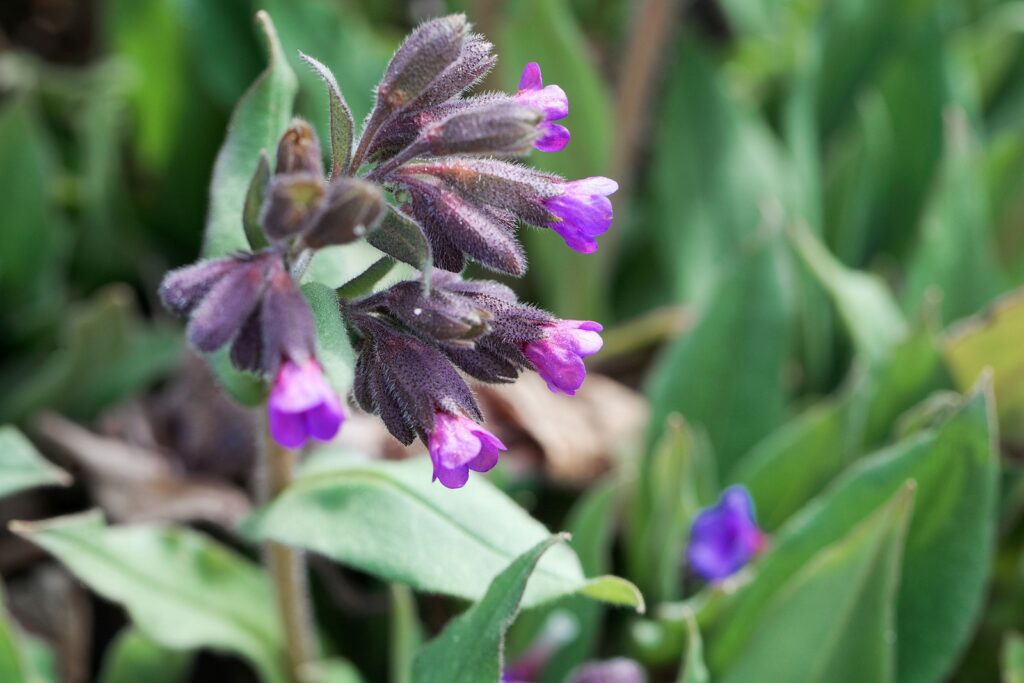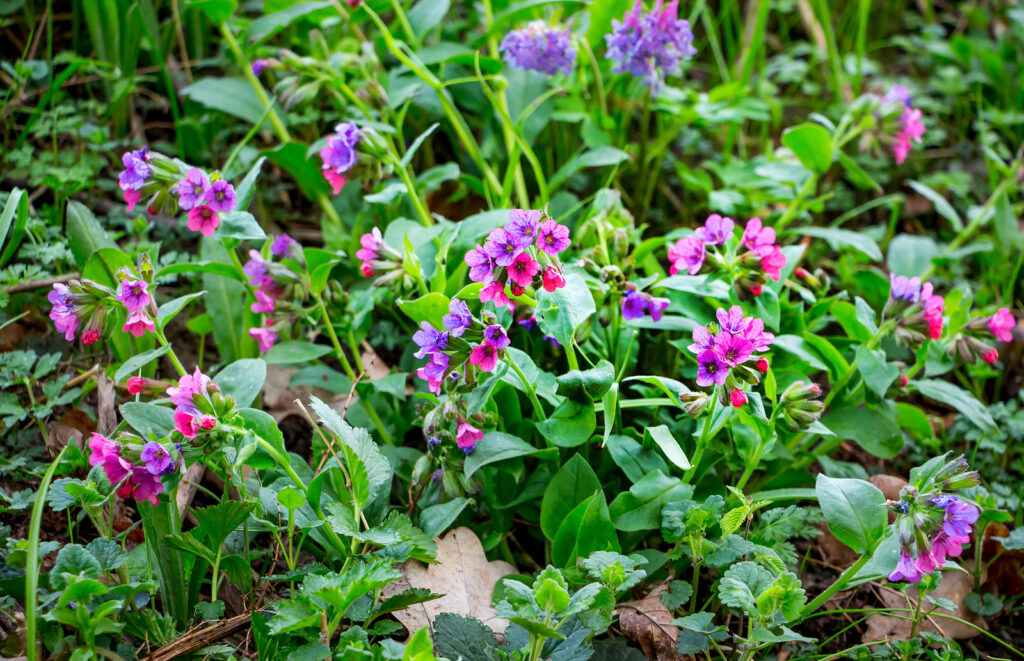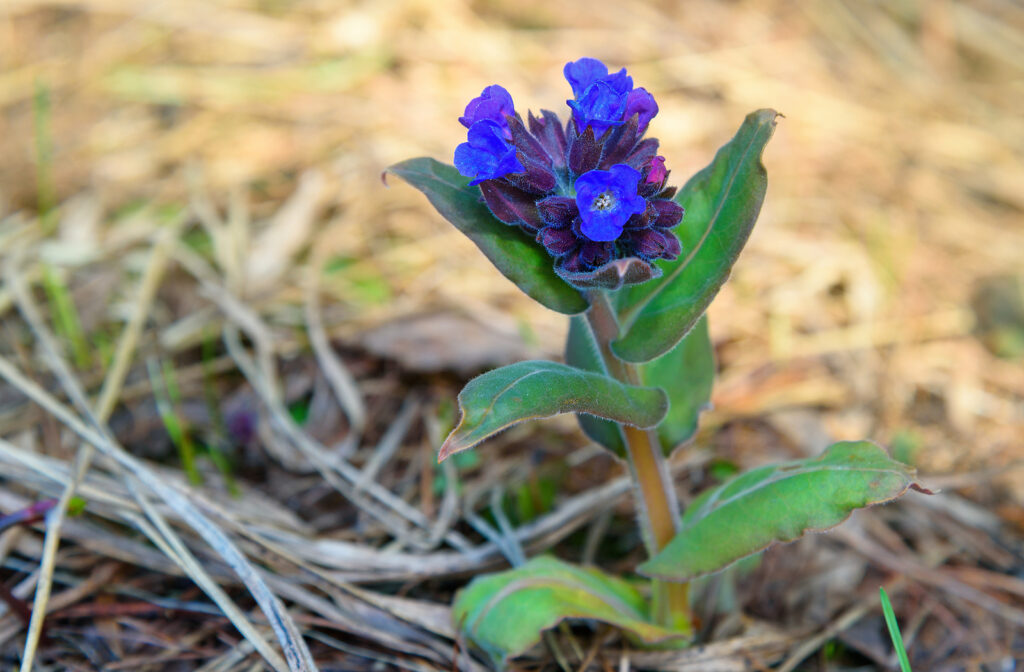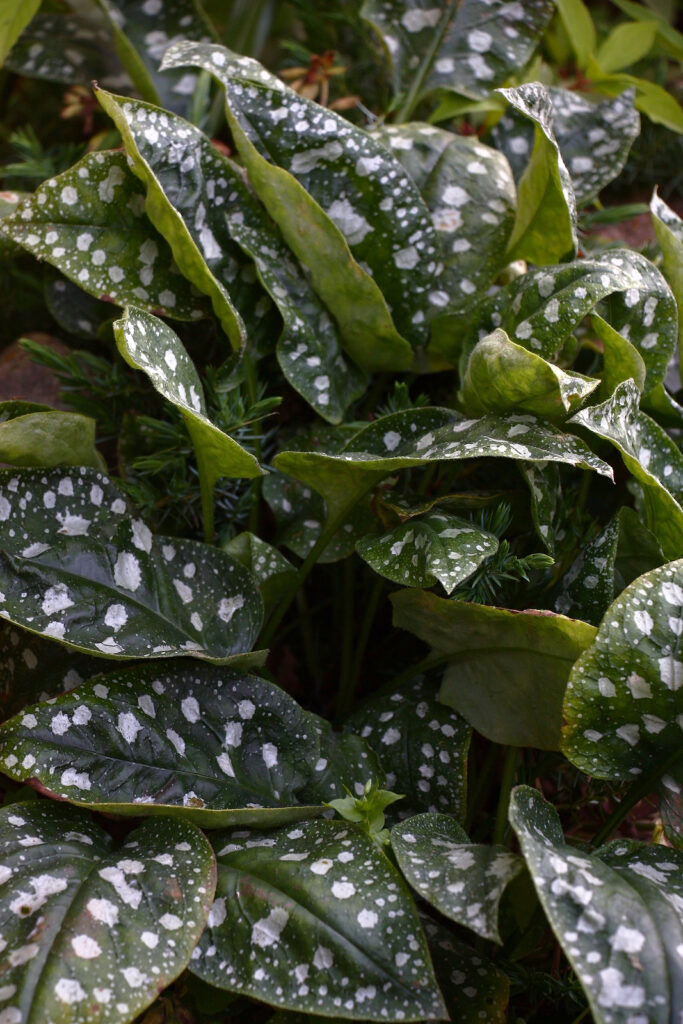Pulmonaria–commonly called lungwort–bears blue trumpet-shaped blooms in spring. The flowers are a source of nectar for early emerging insects. Pulmonaria forms a low clump of matte mid-green leaves. Leaves die back in summer.
Pulmonaria species have varied leaves usually dappled with gray or silver. The flowers appear in drooping clusters
All Pulmonaria have creeping roots. Pulmonaria grows best in full or partial shade. They can be used as a small-scale ground cover in shade areas.
Pulmonaria is a genus of about 14 species. They are often grown for their early flowers, often among the first perennials to bloom in late winter and early spring.

Get to know Pulmonaria
- Plant type: Perennial
- Growing Zones and range: Zones 3-8
- Hardiness: Hardy to -35°F (-37°C)
- Height and width: 12 to 18 inches (30-45cm) tall; 12 to 24 inches (30-61cm) wide
- Foliage: Ovate to elliptic or oblong leaves are often spotted white or silver.
- Flowers: Funnel-shaped flowers in drooping clusters
- Flower colors: Blue, poink, red, white
- Bloom time: Late spring
- Uses: Shade gardens, woodland gardens, mass as a groundcover
- Common name: Lungwort
- Botanical name: Pulmonaria spp.
- Family: Boraginaceae
- Origin: Wide range of habitats in Europe and Asia
Where to plant Pulmonaria
- Grow Pulmonaria in light to full shade.
- Plant Pulmonaria in humus-rich, well-drained, moist soil.
Pulmonaria uses and companions
- Use Pulmonaria as a ground cover in shade gardens.
- Grow Pulmonaria among shrubs in the shade or in a woodland garden.
- Grow Pulmonaria at the front of a border.
- Pulmonaria combines well with early bulbs, ferns, and tall perennials.
- Good garden companions for Pulmonaria include Dicentra, Hosta, Mertensia, Polygonatum, Primula.

When to plant Pulmonaria
- Set Pulmonaria in the garden in spring after all danger of frost has passed.
Planting and spacing Pulmonaria
- Space Pulmonaria 1 to 2 feet apart.
- Add plenty of aged compost to planting beds at planting time.
How to water and feed Pulmonaria
- Give Pulmonaria ample water; keep the soil evenly moist. Do not let the soil dry out.
- Fertilize Pulmonaria with a side dressing of aged compost in early summer.

Pulmonaria care
- Mulch around Pulmonaria to conserve soil moisture.
- Divide Pulmonaria after flowering.
- Remove fading leaves in early summer to make room for new growth.
Pulmonaria pests and diseases
- Pulmonaria is susceptible to powdery mildew in dry conditions.
- Slugs and snails may damage new growth.
Pulmonaria propagation
- Sow seed in containers outdoors as soon as ripe.
- Pulmonaria seeds germinate in 4 to 7 weeks at 60° to 63°F (15°-17°C).
- Pulmonaria hybridizes freely; plants raised from species often do not grow true.
- Divide after flowering in autumn.
- Take root cuttings in midwinter.

Pulmonaria varieties to grow
- Pulmonaria angustifolia, cowslip lungwort, grows 12 to 18 inches tall and has dark blue flowers on 6 to 12 inch stems.
- P. longifolia has slender slivery-spotted green leaves up to 20 inches long.
- P. montana has light green leaves blossoms can be white, blue, or red.
- P. saccharata, Bethlehem sage, grows to 18 inches tall; leaves are spotted silvery-white and flowers are violet-pink or white.



